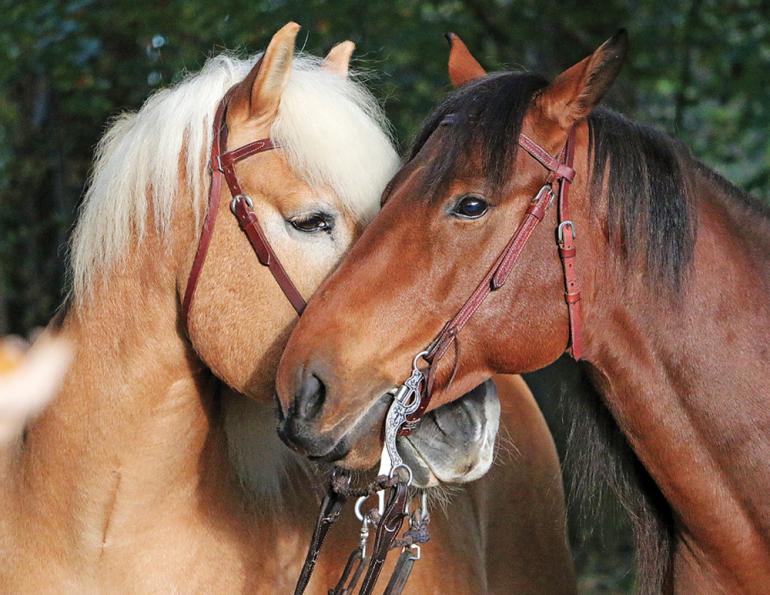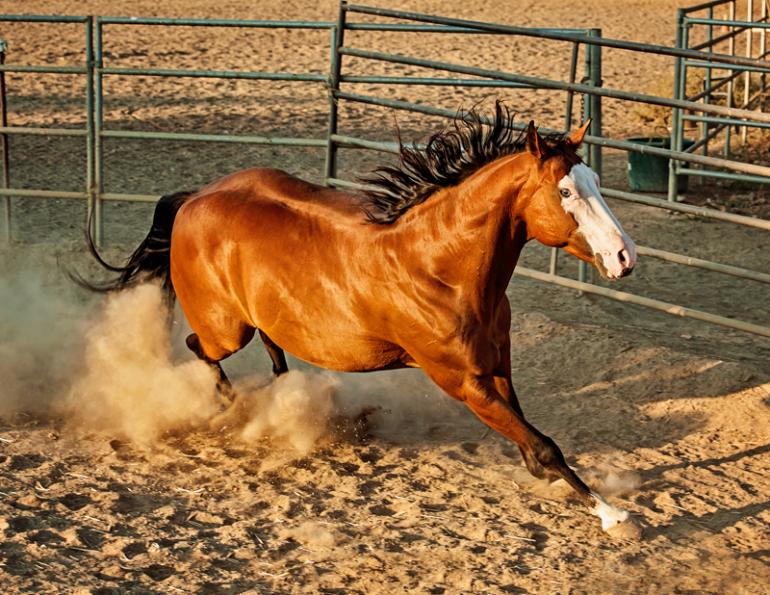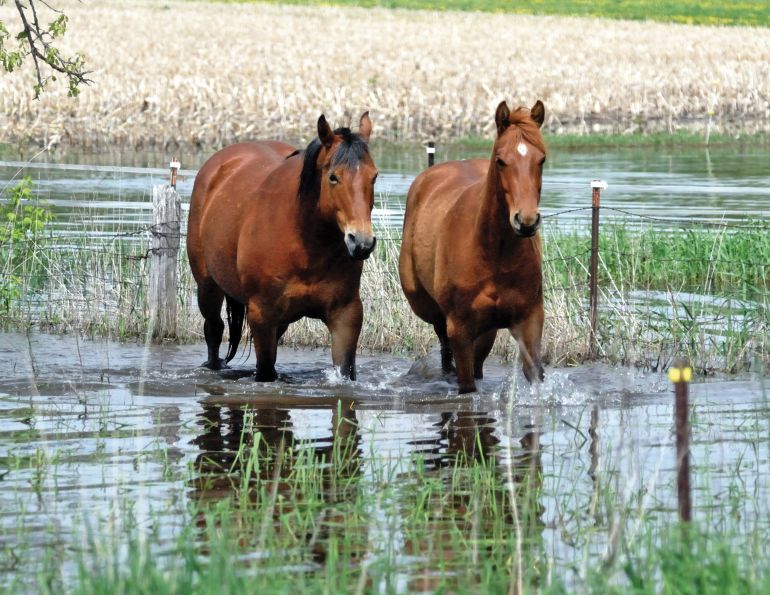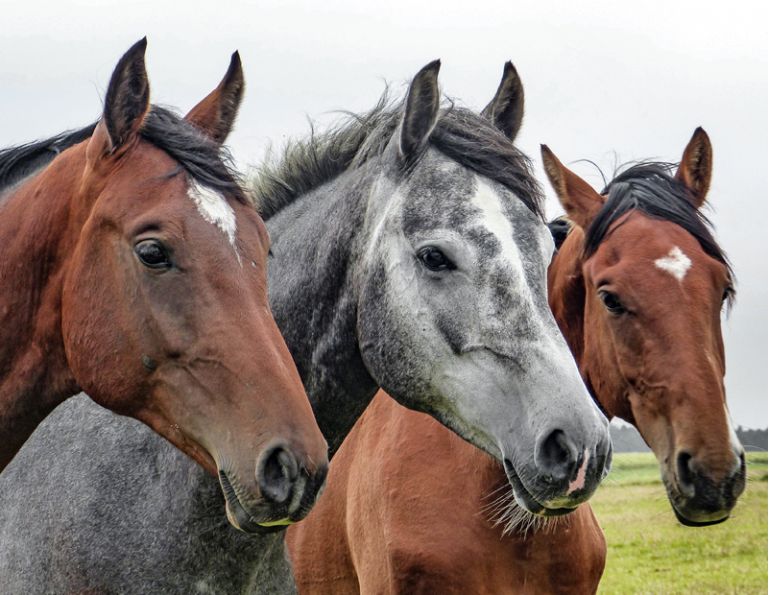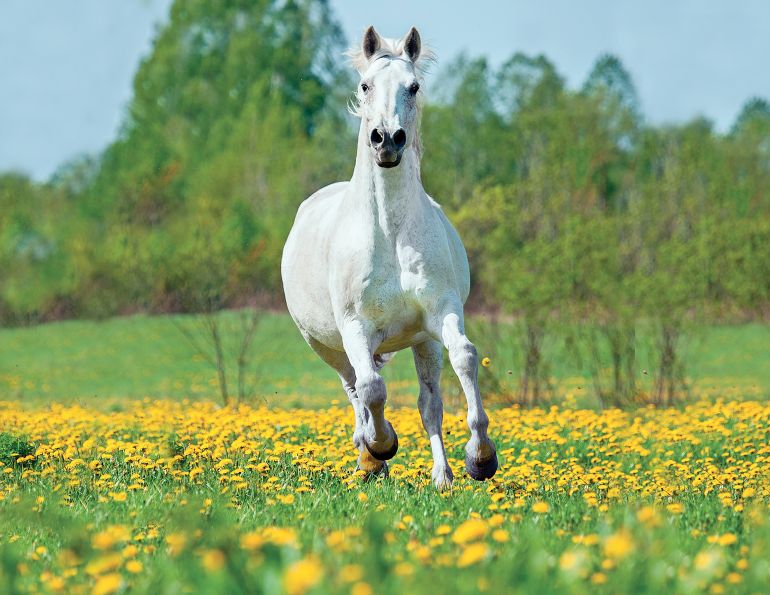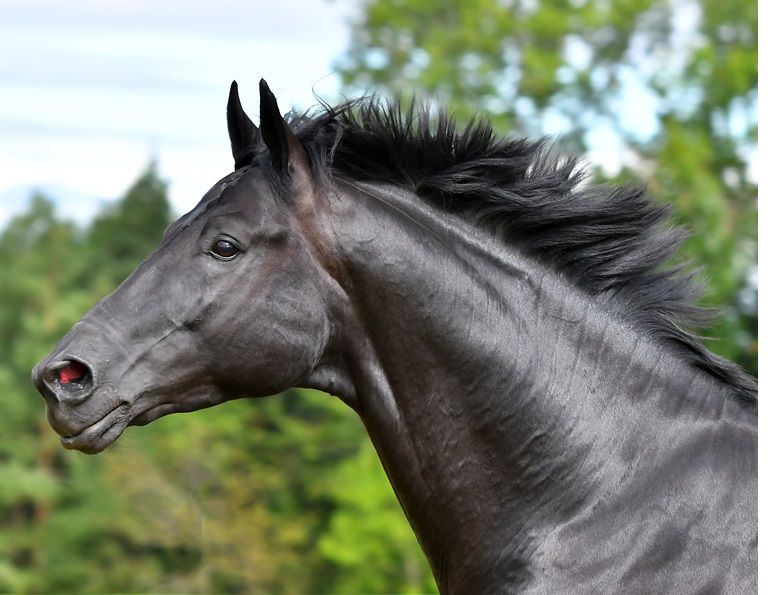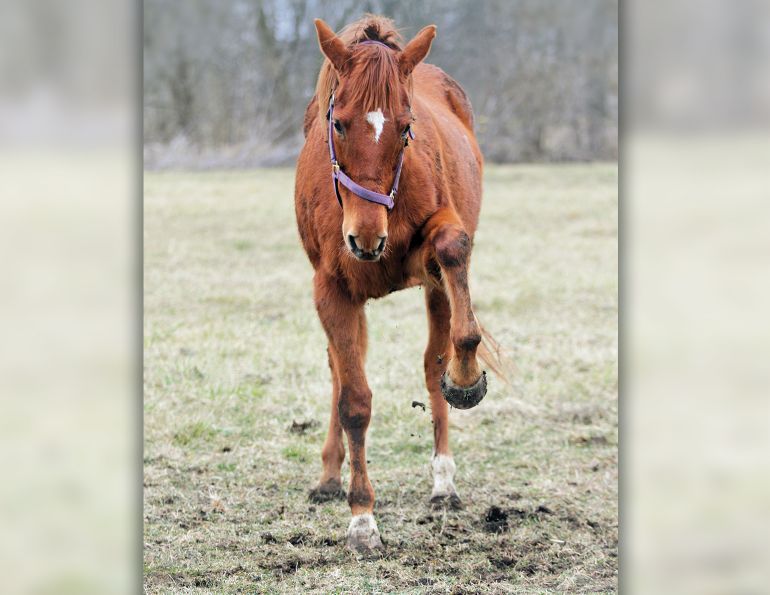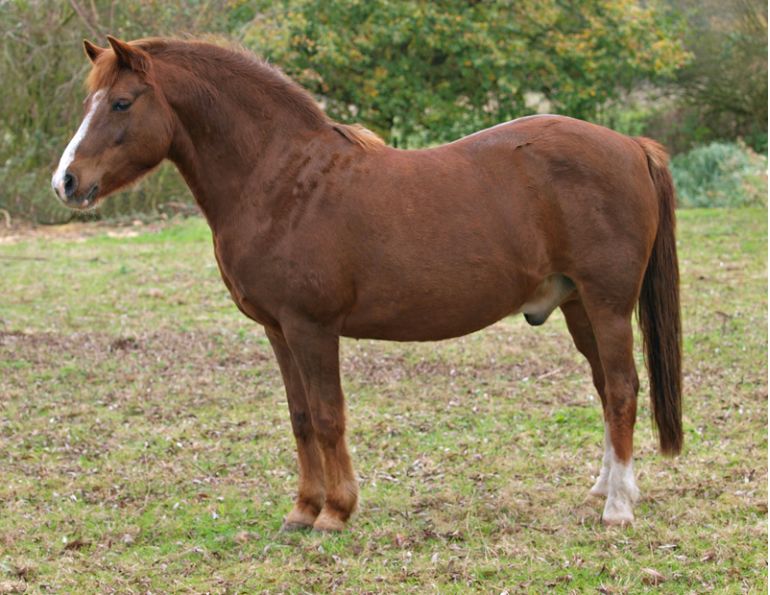Protecting Horses and Humans
By Margaret Evans
The COVID-19 pandemic showed how alarmingly quickly a virus can spread across countries and continents and created an understandable reaction to protect against infection from any and all viruses and pathogens. By extension, it is also essential that there is a level of biosecurity on your farm or acreage to protect horses against agents of disease.
According to a document published by the Canadian Food Inspection Agency (CFIA) entitled National Farm and Facility Level Biosecurity Standard for the Equine Sector, infectious diseases in horses continue to rank as one of the major challenges for horse owners and managers. Diseases lead to illnesses that are sometimes fatal and can incur financial costs, welfare concerns, and possible risks to human health. Some infectious diseases are zoonotic, meaning they are caused by viruses, bacteria, or parasites that can spread from animals to humans, putting people at risk.
Sources of pathogens include other horses that are sick, domestic animals such as pets, contaminated food, water and soil, housing areas, and wildlife and pests such as insects, spiders, ticks, rodents, and other nuisance animals.
Transmission of infection can be direct through physical contact and connection with a pest animal; indirect through contact with clothing, tack, or equipment; ingestion through consumption of contaminated food and/or water; aerosol transmission through tiny contaminated droplets being released by coughing, sneezing, snorting, or whinnying; airborne when tiny particles are released from disturbed materials on the ground or in feed; and vectors such as insects and other wild animals.
Preventive measures and biosecurity systems are an essential part of horse management, especially given the prevalence of spreading and reemerging diseases. With the influence of climate change and unusual shifts in weather patterns, new diseases are emerging, with microorganisms able to expand their geographic ranges, as well as adapt with a genetic change that allows them to infect other animals for continued transmission to humans as a zoonotic disease. In addition, invasive plants have affected every region in Canada. The CFIA estimates that 1,229 nonnative vascular plants have become established with 486 troublesome enough to be considered invasive or weedy and disruptive to native plants.
Horses are constantly surrounded by germs. They are in the ground and ground water, in the bedding, in the air, along fences, and can be passed from horse to horse when they touch noses. Most horses have excellent immune systems to counteract these pathogens, but on occasion when a horse gets sick, they can pass that disease quickly to other horses nearby.
Farms and facilities with poor biosecurity may become a significant risk to others in the neighbourhood and beyond, and every farm should have a biosecurity plan that can be readily implemented. Simple procedures can reduce the transmission of diseases, enhance animal health and wellbeing, protect public health, reduce costs, and maintain an equine health status that allows for safe movement of animals.
Facility Design and Location
If you are thinking of renovating, or expanding your facility and building a new barn, now is the time to consider all the factors for an efficient barn with biosecurity and control of biohazards in mind.
Number one is location. Where the barn should be built will be determined by many factors, including biosecurity. If you are living in a geographic area less densely populated with horses and livestock, the chances are good that you are already reducing the risks of exposure to pathogens. But the influence of incoming pathogens can change depending on the health of your horses, their age, underlying conditions, and their genetic predisposition to health issues.
Related: Podcast - What Does Biosecurity Mean?
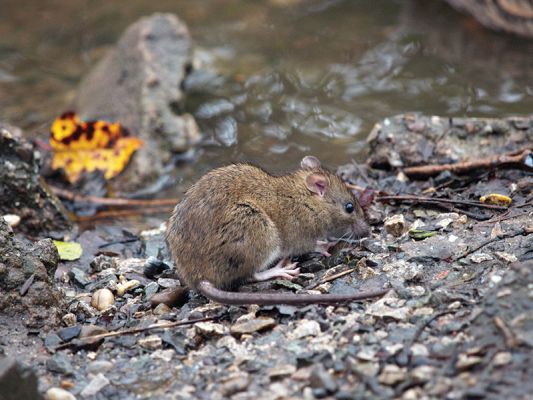
With numerous sources of pathogens and methods of transmission on a farm, good biosecurity systems are essential for responsible horse management. Photo: Canstock/VictorBurnside
The slope of the land, soil type, presence of low areas, and the existence of a river, pond, creeks, or streams on the land will dictate where and where not to build. Ideally, a barn should be located on level, dry, well-drained ground with ease of access all around and away from critical water sources. Consider the value of trees that will provide shade for horses and protection from weather during pasture turnout.
Related: Stream Care Strategies for Your Horse Property

The facility should have a dedicated area where new horses, or those returning home, can be kept isolated until the quarantine time has passed. Photo: iStock/Winhores
Plan for the number of horses that will be stabled, and whether any will live permanently outside. Will any horses travel to competitions or to other farms for breeding? These activities may present greater hazards to horses remaining at home, since the travelers may return to the farm carrying an infectious disease. In the outlining phase of your facility, plan for a dedicated space where a new or returning horse can be kept isolated until it has passed the quarantine time and can mix with other horses. In addition, design the facility with equestrian paths and walkways to control the movements of people, equipment, and machinery.
In the initial stages of planning, identify your water source. Will you need to put in a well? You will need enough pressure to run water for high use, such as filling water troughs in the pasture, washing horses, or for major cleaning jobs which, in a horse barn, seem to be endless.
On the subject of water and management of horses in pasture, there are special considerations to be considered should watercourses — a stream, creek, or a pond — exist where the horses will graze. The banks bordering watercourses are fragile riparian areas that support moisture-loving plants, distinctly different from aquatic plants in the water and drier grasses in the pasture. They control stream flow, prevent erosion, and support fish and aquatic insect habitat, while providing nesting areas for aquatic birds and reducing pollutants such as phosphorus and nitrates. Horses trampling riparian areas to access drinking water can do a great deal of damage, and ideally should be kept away from these fragile habitats by providing their water in a trough that can be regularly drained and scrubbed.
Building Materials
As spring arrives, horse owners look at new building projects or renovations of existing barns and storage buildings. This is the perfect time to consider biosecurity options as part of the construction plans, and give further thought to long-term arrangements that help keep horses safe.
For construction materials, consider using smooth, non-porous and durable materials that are easy to clean and disinfect, such as metal, vinyl-coated metal, some plastics, polymer-coated wood, and sealed concrete. Surfaces sealed with non-toxic marine grade enamel paint are easy to disinfect and keep clean, but avoid sealing surfaces that horses may chew on. Ensure that the paints, sealers, cleaners and disinfectants you use are approved for use in livestock buildings.
Consider roofing materials, snow loads, and effective ways to channel rainwater from the roof and gutters into your drainage system. Choose building materials that will not shatter or splinter if a horse kicks them, or which degrade from continued exposure to sunlight or cleaning products.
Water supply to any barn structure is essential, so you will need a discussion with your plumbing contractor about installation of both an adequate water heater and a sufficient number of taps and sinks for cleaning and handwashing. In addition, consider the value of a horse wash stall, which will require adequate water pressure and hot and cold water, good lighting, and a sink and product storage shelves to keep everything off the floor. It should be plumbed for sufficient subfloor drainage.
Laying Out the Farm Biosecurity Plan
Every farm needs a biosecurity plan. It doesn’t have to be costly or complicated, but should have practical procedures and preventative measures that anyone working at the facility can follow. It starts with communication, since the plan is to protect the health of your horses by looking at all the ways you can minimize risks of disease transmission. The biosecurity plan and procedures should be shared with everyone who either works at the farm or visits to provide services.
For those working with you, the plan should include what is expected of them in terms of cleanliness, hygiene, and biosecurity procedures. For those visiting, such as delivery people, service providers such as coaches and trainers, visitors arriving for clinics, and anyone who is boarding their horse, the plan should include their access, parking, open access areas inside the barn, access to arenas, and off-limit or controlled access to areas you want to protect, such as stalls for sick horses, pregnant mares, new arrivals still being monitored, and horses with special needs.
Think of your plan as a work in progress. It is always up for review and improvement, and is flexible to change, especially when there is a new outbreak of a disease. Infections could be local issues, or they could be widespread. The worldwide COVID-19 pandemic is an extreme example of the need to take effective precautions for the protection of everyone. The same thorough approach to precautions should be applied for all those working and visiting the farm.
For biosafety and for tracking the possibility of disease, the plan must stress the importance of keeping records. Every horse should have its own file with its record of vaccinations, dewormings, incidents of accident and illness, names of everyone working with and around the horse, names of the attending veterinarian and farrier and work done (including summaries of pertinent discussions), and general behaviour of the horse including (most importantly) changes in behaviour. Monitor what is normal in the horse’s eating and drinking habits (some horses drink a lot more than others), manure composition (healthy formation compared to a sloppy consistency), and alertness/activity level (a horse with the onset of sickness may be slower, less eager to move, and off its food). Knowing what is normal and what has changed helps identify new or potential risks. It could be a disease, or it could be something obscure, like an invasive plant that has shown up in the pasture that the horse has grazed on. Monitoring pasture grazing areas is part of monitoring horse health, and any invasive plant or spreading weed should be removed.
Related: Air Quality in the Horse Barn
Whether a new facility or an assessment of an existing farm, start with good planning from a biosecurity perspective. To help with the development of your Farm Biosecurity Plan, Equine Guelph has outlined six steps:
Step 1 - Identify the risks, including diseases in the local area and those that could be brought in by other horses or visitors.
Step 2 - Prepare a diagram of the farm. This will illustrate how you can best monitor and control the flow of movement in and out of the property. This diagram should show:
- property boundaries, fences and gates;
- the location of neighbouring properties with horses or livestock;
- laneways, pathways, parking locations, and traffic routes;
- pasture, animal housing, arena and eventing areas;
- storage locations for bedding, feed, manure, and garbage;
- water sources, watering and feeding locations.
Rate the areas that are high biosecurity concerns, then review the management practices of those areas to minimize risks.
Step 3 - Review the diagram and create a list of key concerns and what to do about them. Management issues include:
- asking people to wash their hands before handling a horse. Your bathroom facility should include a sink with hot and cold running water, soap (liquid if possible), paper towels (no cloth towels), and garbage disposal. Hand sanitizer should be available;
- minimizing the presence of rodents and insects by keeping feed secure and eliminating standing water;
- not using communal water sources or sharing equipment;
- knowing how to take vitals and knowing the normal baselines for individual horses;
- knowing when to call the vet if a horse shows signs of something out of the ordinary, such as reduced appetite, depression, fever, nasal discharge, coughing, diarrhea, or some symptom of neurologic distress;
- creating a vaccination schedule and staying up-to-date with disease concerns in your area;
- fixing deteriorating fences and broken equipment, and eliminating water run-off due to spring thaws and summer rains.

Learn your horse’s baseline vitals to help you determine when to call the veterinarian if the horse shows early signs of a health issue. Photo: Shutterstock/Wavebreakmedia
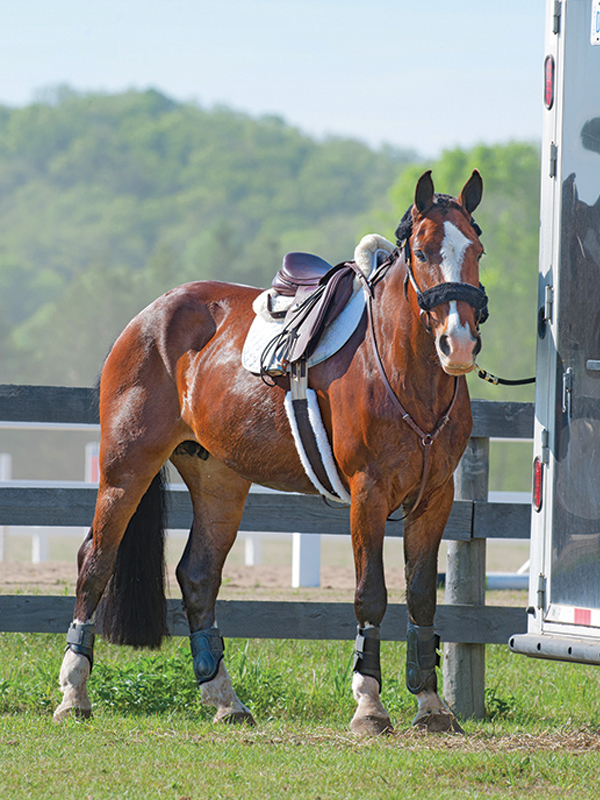
In early spring, review your horse’s vaccination and deworming protocols with your veterinarian to ensure he is well protected during the showing and riding season. Photo: Clix Photography
Step 4 - Identify your own critical biosecurity goals and best practices by using the information from your diagram to identify those specific challenges that could impact your horses’ health or become an issue for people.
Step 5 - Develop an implementation strategy by prioritizing short-term and long-term goals, and clearly communicate your farm’s biosecurity plan to all visitors, service providers, boarders, and staff. Post your plan on your website.
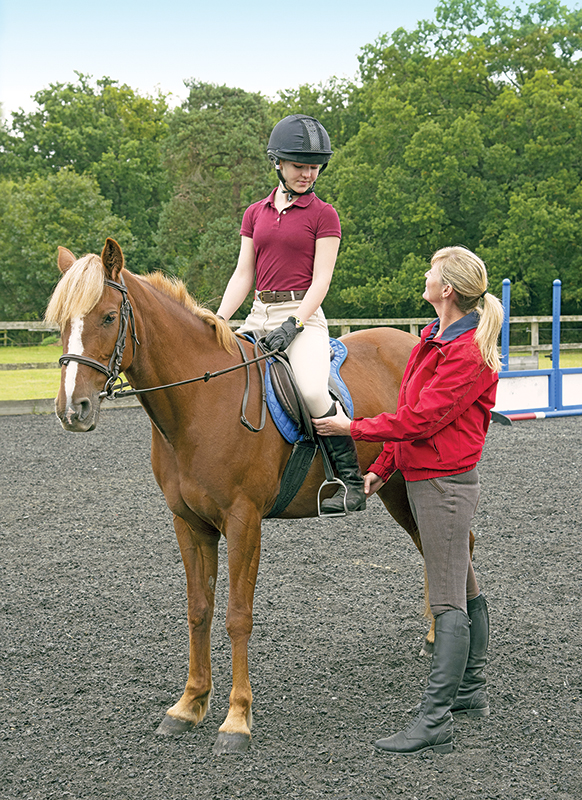
All visitors to your farm, including new boarders, clinicians, riders coming for lessons, and service providers, should have access to your farm’s biosecurity protocols. Photo: Shutterstock/Peter Titmuss
Step 6 - Assess the effectiveness of the plan and improve it regularly. Herd health records and the secure effectiveness of the farm infrastructure will tell you how well your plan is working.
Ensure staff, boarders, outside professionals, and delivery people understand and follow your guidelines, including the use of the appropriate access areas. With the use of gates, you can limit non-essential traffic. For obvious purposes, visitors should not be allowed onto the farm if they have had recent contact (less than 48 hours) with horses known to be or suspected of being infected with a contagious disease, or if they have recently returned (less than five days) from a foreign country where they had contact with equines or other livestock. People wanting to visit, such as a potential boarder, can be referred to the biosecurity plan on your website before arriving. A visitor log can be used to document visitor access, which would be extremely helpful in the event of a disease outbreak at any level.
Some larger farms have Standard Operating Procedures in place, which can be reviewed with the veterinarian for updating or following a disease occurrence on the farm. For instance, equine strep throat, or strangles, is a highly contagious bacterial disease and requires infected horses to be completely separated from the healthy herd. The problem is that the biosecurity management of this is such that recovery is not always clear-cut, and horses that appear to be healthy remain carriers of the bacteria.
To keep everyone properly informed, a designated biosecurity person should keep staff trained and updated when changes occur. This is where a maintenance record of staff training would be invaluable, and updates and refresher talks can be scheduled for a short amount of time suitable for everyone.
Managing Access

The different biosecure zones on a horse farm. Yellow perimeter fencing creates a controlled access zone. Controlled access points are marked in purple, and restricted access zones are marked in red.
Access management is described as “the use of physical barriers and/or procedural barriers to reduce transmission of pathogens onto, within, and between horse farms and facilities by people, horses, equipment, materials and vehicles.”
Most of the time, visitors and trades people enter farms fairly casually, but you might want to consider a more controlled access to limit biosecurity risks. An obvious limited access area would be the one for horses returning from off property, newly acquired horses, and sick horses in recovery.
Related: Sickness Prevention in Horses
Signage is a perfect way to welcome visitors to the facility and, at the same time, make them aware that there are biosecurity protocols in place. A sign right at the entrance to the farm should direct any visitor to the office, or other appropriate area, to check in. It is both a practical and a courteous way to greet a newcomer. Signs to all designated and off-limits areas should be clearly marked so people don’t accidently wander into the wrong place.
Proper access management will help you to…
- Identify and block pathways for disease transmission;
- Control unwanted and unnecessary access to the facility and horses;
- Manage movement of people, horses, equipment, materials and vehicles;
- Reduce the risk of spreading disease in the event of an outbreak.
Establishing biosecure zones will allow for the separation and protection of horses, humans and areas within a facility. There are two types of zones: controlled access zones and restricted access zones.
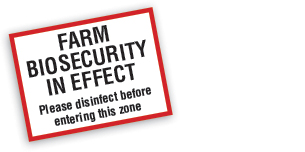
An example of a sign you could post at a controlled access point.
A controlled access zone contains facilities that are indirectly involved in caring for horses and areas such as laneways and storage buildings.
Restricted access zones are areas within a controlled access zone where horses commonly reside, such as barns, paddocks and quarantine areas. Restricted access zones will have stricter biosecurity measures and will restrict access to horses. Controlled access points are entry points to each zone.
Best practices for horse and facility access management:
- Review the facility to determine biosecurity risks and create controlled access and restricted access zones;
- Create segregated areas for horses returning from off property, new introductions, and for treatment of sick horses;
- Keep all zones free of debris and manure, which may pose a potential disease risk;
- Ensure all biosecurity equipment, such as hand sanitizer and disinfectant, are provided at designated access points;
- Post signage to inform and direct people of biosecurity zones and measures;
- Only allow outside equipment, tools and vehicles into controlled access zones if it is unavoidable.
Every horse owner needs to do all they can to reduce the risk of an infectious disease from being introduced to their property and horses. Taking basic precautions is common sense and once you’re in the habit, they are quite easy to implement. Reducing the incidence of infectious disease in our animals saves time and money, and enhances the quality of life for both horses and their owners. Prevention is always easier than cleanup.
CLEAN - WASH - DISINFECT
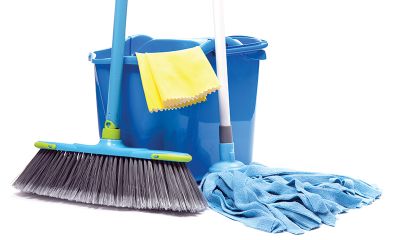
Photo: Canstock/Irabel8
While these tips seem basic, it helps to review habits and procedures to maximize the value of the time spent on the task.
Step 1 - Clean
Do a basic manual clean to remove organic matter. If you are cleaning feed tubs or water buckets, manually remove any dirt, bits of bedding, hay, or particles of manure that may have entered the container.
Step 2 - Wash
Wash with soap and hot water, and scrub the surfaces using a hand brush. Then rinse and let dry. Make sure surfaces are scrubbed and well rinsed so that any materials such as disinfectants you plan on using will work to their maximum effect.
Step 3 - Disinfect
There are many disinfectants on the market, each with different strengths and purposes. They may or may not be appropriate for horses, especially for feed and water buckets, so ask your veterinarian for guidance on the safest and most effective product to use.
If you are doing a seasonal cleaning of the barn, consider what the best tools would be to clean wall surfaces and how to safely reach high surfaces. Brushing with a long-handled bristle brush may work well on rough surfaces. If it is hot and dry in mid-summer and horses are able to remain outside for a day or two, power-washing might be appropriate. Allow time for everything to thoroughly dry.
Clean, wash and disinfect vehicles and horse trailers regularly and after visiting another farm, especially in areas that have high human-horse contact.
Clean your tack and everyday equipment regularly, including halters and leads, and store in a warm, dry room to prevent the build-up of mold. Should you choose to disinfect tack, ask your local saddler to suggest a good product to avoid damage to leather or synthetic materials.
Step 4 - Protect Yourself
Above all, protect yourself by using the appropriate personal protective equipment such as gloves, coveralls, and masks or protective eyewear/shield.
DISEASE RESPONSE
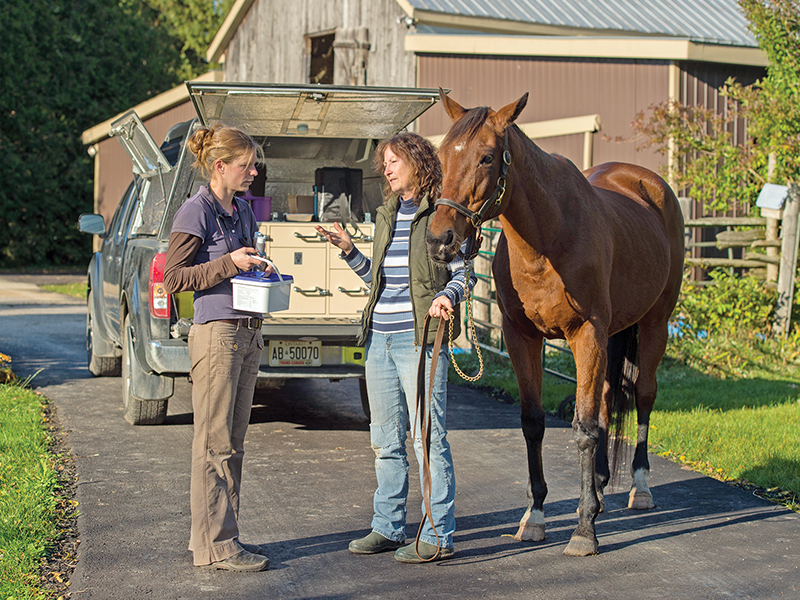
Photo: Clix Photography
The National Farm and Facility Level Biosecurity Standard for the Equine Sector provides the following best practices for disease response processes following the suspicion or identification of disease in a horse at a farm or facility:
- Notification - Notify the owner or the person authorized to act on the owner’s behalf.
- Separation - Whenever possible, physically separate the suspect and ill horses from the other horses, and manage them as a distinct group to prevent direct and indirect transmission of pathogens.
- Obtain tentative diagnosis - Consult a veterinarian to determine if the horse is infected with a contagious disease. If a veterinarian is not immediately available to attend the property, request advice from the veterinarian for measures to prevent further spread.
- Activate disease response team and implement the communication strategy - For large facilities and events, a team of individuals with different backgrounds and expertise is useful for managing the situation. Designate a spokesperson to communicate the information. Your veterinarian may be required to report certain diseases (a federal reportable disease or a provincial reportable/notifiable disease) to the appropriate government agency.
- Identify other potentially exposed horses - While obtaining a tentative diagnosis, determine which other horses may have been exposed. Focus on those that may have had direct contact (nose to nose) or indirect contact (shared equipment, adjacent stall, shared water, and contact with other participants).
- Restrict movement - Temporarily restrict movements of ill, suspect and exposed horses, along with their handlers, until a veterinarian has made a tentative diagnosis and a response plan is implemented.
- Monitor horses - Observe ill and exposed horses for changes in health status.
- Release horses - Prior to removing movement restrictions, consult with the attending veterinarian. Brief all participants leaving the event about the disease and the need to monitor their horses for signs of illness. Horses that are ill and/or exposed through direct and indirect contact should upon their return home be separated from other horses, monitored, and treated as appropriate until their illness clears or their health status is determined. Unexposed horses may be transported to other venues – disclose previous attendance at an event where an infectious disease was present.
TRAVELLING WITH HORSES
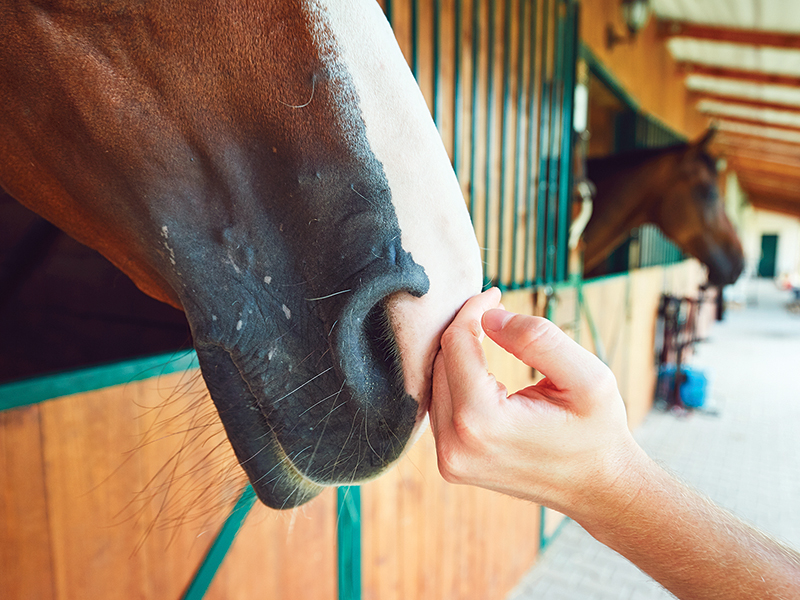
When travelling, ask people not to touch your horse, especially his mouth, nose, and eyes. Photo: Shutterstock/Jaromir Chalabala
With the coming riding season, we start planning to go places with our horses. Wherever our destination, keep these biosecurity tips in mind to reduce risk:
- Before any trips are planned, review vaccinations and deworming recommendations with your veterinarian.
- Before leaving the property, check the horse from head to hoof to ensure he is healthy, sound, and fit to travel and ride.
- Clean and disinfect the trailer, including all tack and equipment you’ll be taking along.
- If your horse is a fussy loader, spend time retraining or reacquainting him with the trailer and take him on short trips ahead of time before the longer trip.
- Pack a first aid kit for yourself and your horse. Include a thermometer and take the horse’s temperature both before and for 14 days after returning from your trip. If a higher than normal fever is detected, consult with your vet.
- Try not to ship with horses from other farms unless you know their horses are healthy and have received recommended vaccinations.
- Bring along a supply of water to last at least one or two days, enough for the trip and for once you’ve arrived at your destination.
- On arrival, use your own buckets. If you are using the facility’s hose, do not let the end of the hose enter the water or touch the bucket; this prevents transfer of germs from the hose to your horse. Best practice is to pack a short hose that you can attach to the end of the facility’s hose.
- Bring your own hay, feed, and feed buckets.
- Bring your own grooming tools and equipment, and don’t borrow or lend.
- Ensure that the horse housing at your destination is clean and optimally has been disinfected, and contains fresh bedding.
- Keep your horse away from others and don’t let him sniff or touch others. Request that people do not touch your horse, especially his nose, eyes and mouth.
- Keep plenty of hand sanitizer and liquid soap on hand and wash your hands frequently, especially after helping other people with their horses.
- On arrival home, shower, blow your nose, and put on clean clothes and shoes before going near your other horses.
Related: Intestinal Parasites in Horses
Information for this article was used with the kind permission of Equine Guelph.
Main Photo: iStock/BiancaGrueneberg



